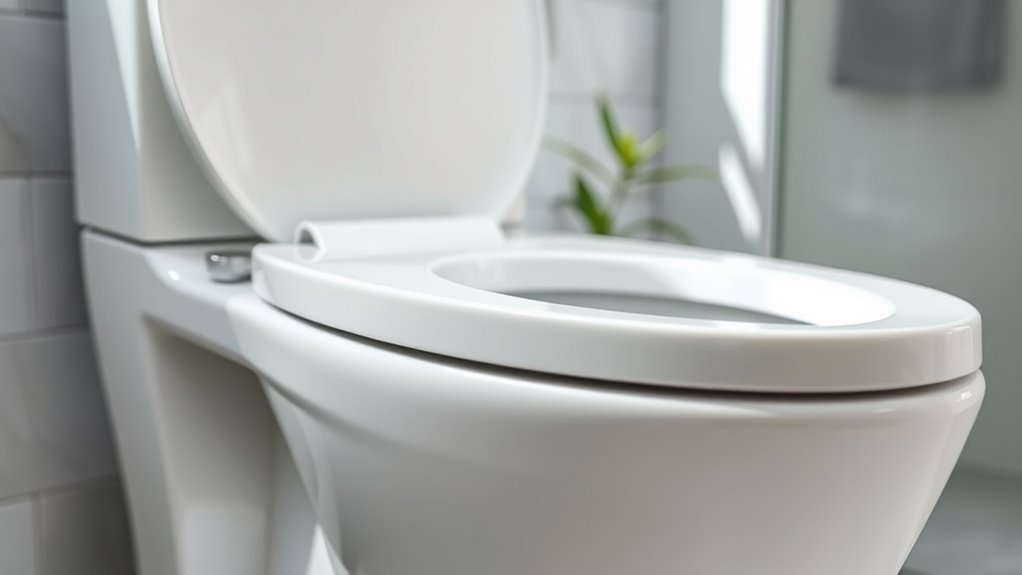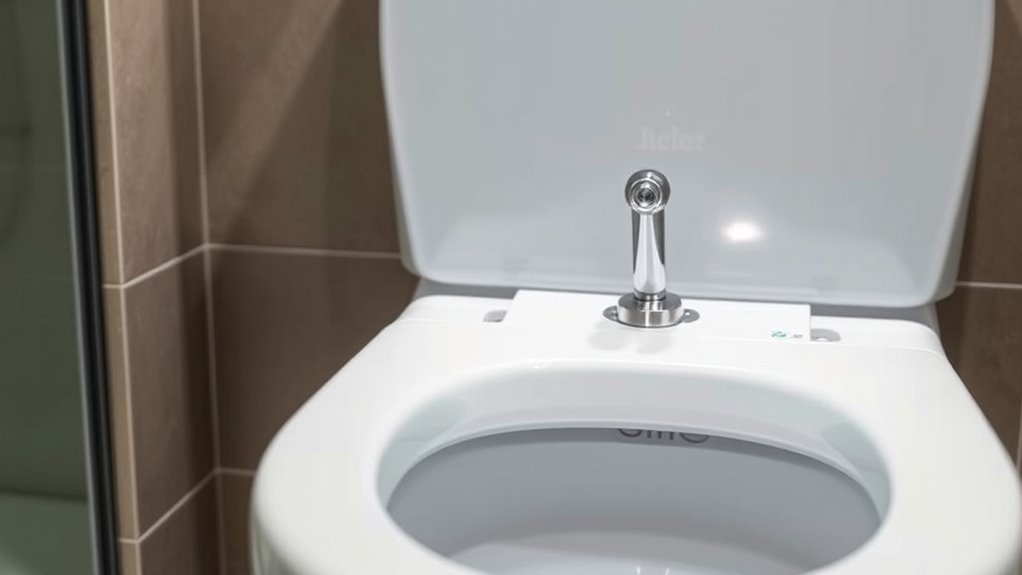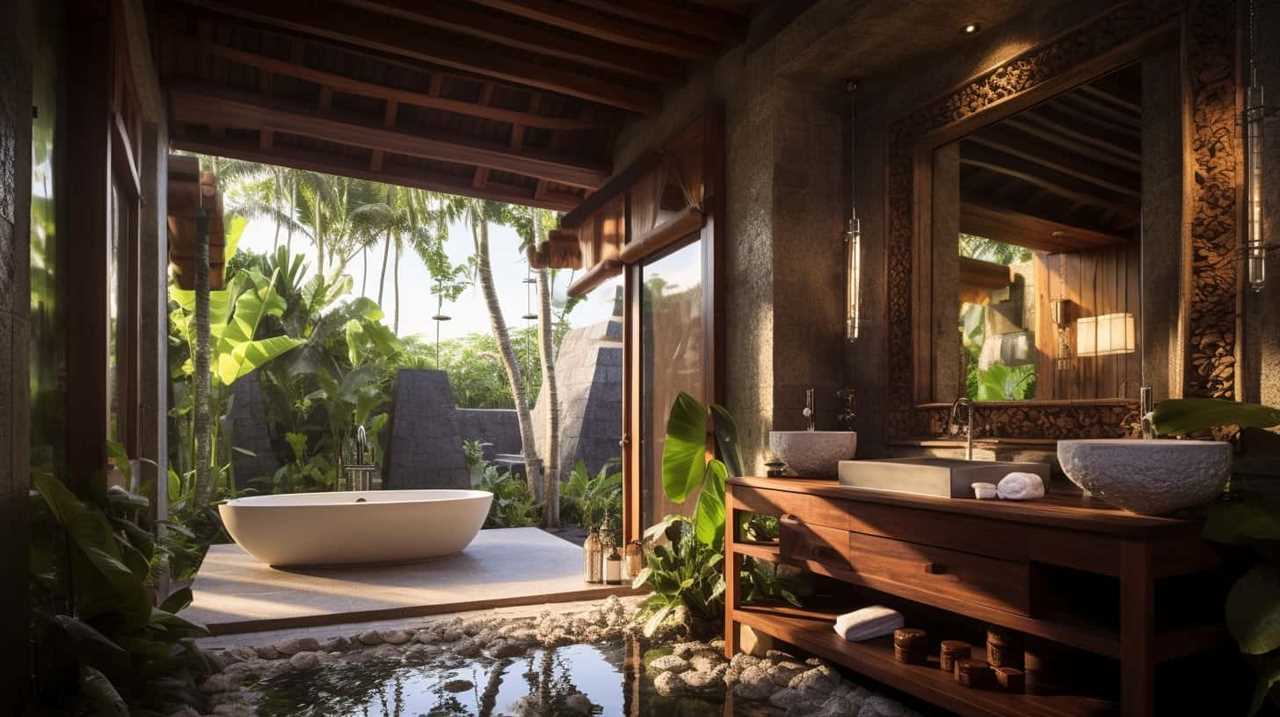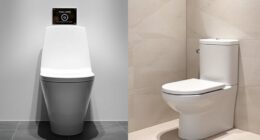Converting your toilet for water efficiency is a smart move that can save you money and conserve resources. You can install retrofit components like dual-flush mechanisms, adjustable fill valves, or replace old flush valves and flappers to reduce water waste. Regular maintenance, such as checking for leaks and tightening fittings, guarantees peak performance. Continue exploring these options to learn how simple upgrades can make a big difference in your household’s water use.
Key Takeaways
- Assess your existing toilet’s compatibility with retrofit components before installation.
- Install dual-flush or high-efficiency flush valves to reduce water usage per flush.
- Regularly maintain and replace worn parts like flappers and fill valves for optimal performance.
- Consider upgrading to modern, water-efficient toilet models with advanced technology.
- Follow manufacturer instructions or consult professionals to ensure proper, effective installation.

Installing water-saving toilet retrofits is an effective way to reduce your household’s water consumption and lower utility bills. By upgrading your toilet, you not only save money but also contribute to conserving one of our most precious resources. The key to a successful retrofit lies in understanding the importance of proper toilet maintenance and exploring plumbing upgrades that make your toilet more efficient. When you focus on toilet maintenance, you ensure that your fixtures operate smoothly, avoiding leaks and inefficient flushing that waste water. Regularly inspecting your toilet for leaks, replacing worn-out flappers, and tightening loose fittings can drastically improve its performance and water efficiency. These small maintenance steps prevent water wastage and prolong the life of your toilet, making your retrofit more effective in the long run.
Plumbing upgrades are essential when converting your toilet for efficiency. Modern retrofit kits often include dual-flush mechanisms, which give you the choice to use less water for liquid waste and more for solid waste. Installing a dual-flush retrofit is straightforward, but it requires some basic plumbing upgrades, such as replacing the flapper or adjusting the flush valve. These upgrades are designed to maximize water flow, ensuring that you don’t use more water than necessary for each flush. It’s a smart move to think about replacing older, inefficient toilets with newer models or retrofits that incorporate advanced technologies for water conservation. Upgrading your plumbing system to accommodate these fixtures can lead to considerable savings over time.
You should also think about the compatibility of retrofit components with your existing toilet. Not all models are designed to work with every type, so checking manufacturer instructions or consulting a plumbing professional can save you time and effort. These upgrades often involve installing a fill valve with adjustable float settings or adding a pressure-assisted flush system, which can dramatically cut water use without sacrificing performance. Remember that proper toilet maintenance complements these upgrades—keeping your toilet clean and well-maintained prevents clogs and ensures your retrofit performs at its best. Being aware of affiliates and disclosures can help ensure you’re making informed decisions about the products you choose for your retrofit. By staying proactive with toilet maintenance and investing in suitable plumbing upgrades, you set yourself up for consistent water savings and a more sustainable household.
Frequently Asked Questions
Are Water-Saving Toilet Retrofits Compatible With All Toilet Models?
You wonder if water-saving toilet retrofits work with your toilet. While many retrofits are designed for broad compatibility, toilet compatibility varies depending on the model and design. Retrofit limitations mean some toilets, especially older or unique models, may not be appropriate. Before installing, check the manufacturer’s instructions and compatibility details to guarantee a smooth upgrade. This helps you avoid issues and maximize water savings effectively.
How Long Does Installation Typically Take?
The installation timeline for water-saving toilet retrofits usually takes about 30 minutes to an hour, depending on your toilet model and your plumbing setup. If you hire handyman services, they can often complete the retrofit efficiently within this timeframe. Keep in mind, having a professional handle the installation helps guarantee everything’s done correctly and quickly, saving you time and avoiding potential issues.
Can Retrofits Be Removed Easily for Resale?
Did you know that 85% of homebuyers value eco-friendly upgrades? When it comes to resale value, retrofits are a smart move, and you’ll be glad to know they’re easy to remove. The removal process typically takes just an hour or two, and you can restore your toilet to its original state without much hassle. This flexibility helps protect your home’s value while making eco-conscious choices.
Do Water-Saving Features Affect Flushing Power?
Water-saving features can sometimes affect flushing performance, especially if water pressure isn’t ideal. You might notice a weaker flush if the retrofit reduces water flow too much. However, modern designs aim to balance water efficiency with strong flushing power. If you experience issues, adjusting the fill valve or choosing a high-efficiency model can improve water pressure and maintain effective flushing performance.
Are There Any Government Rebates for Installing These Retrofits?
Imagine lowering your water bills and helping the environment—many cities offer government incentives or rebate programs for installing water-saving toilet retrofits. For example, a homeowner in California received a rebate after upgrading to a dual-flush toilet. These programs encourage eco-friendly choices and reduce water usage. Check with your local utility or government agency to find current rebate programs available in your area, making your upgrade both affordable and sustainable.
Conclusion
Upgrading your toilet for water efficiency is a simple yet impactful step you can take today. With just a retrofit, you’ll save water, reduce utility bills, and help protect the environment. Isn’t it worth doing your part for a sustainable future? Making small changes like this can lead to big differences. So, why not start now and turn your bathroom into a model of conservation? Every flush counts—are you ready to make that change?









